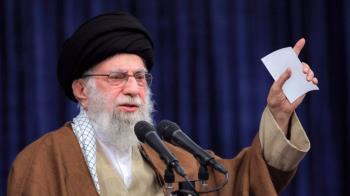Alwaght- From the World War ll on and the onset of the Cold War, the US to confront communism and build a defense line in front of the Soviet Union has put the West Asia region on its agenda as part of the capitalism's global battlefield. In the years after the Second World War, the US adopted the policy of building military bases across the world including in West Asia in a bid to take on the Soviet Union in arms competition. Initially, the US military bases were built majorly in Japan, Germany, and South Korea as the losers of the earlier global war. But gradually this approach was changed and as the competition with the Soviet Union continued, Washington officials also paid attention to West Asia region as a vital area for the US.
After a short time, the region was transformed into a backyard for the US. During the past few decades, Washington not only managed to control the strategic region but also used it as an instrument to strengthen its global hegemony. The US now operates a variety of military bases across West Asia including Saudi Arabia, Iraq, Kuwait, Bahrain, and other countries.
A look at the number and pattern of distribution of these American bases in the region, and the doctrines governing the US foreign policy in the New Millennium, it can be noted that the US military bases are not established only for military aims and defensive and offensive purposes. The fact is that the existence of these military bases during the Cold War era was more for getting toehold and thwarting the influence and spread of communism ideology across the globe.
However, following collapse of the Soviet Union in 1991, the excuse of communism influence has practically lost sense. Nevertheless, in post-Soviet time just against the speculations not only Washington declined to reduce its military bases but also they witnessed a quality and quantity upgrading and expansion.
With a consideration of the number and size of the American bases in the region, five major objectives can be enumerated for their ongoing operation.
1. The US military presence in West Asia region particularly in countries that are neighbors to Islamic Republic of Iran has seen a considerable increase especially in the past few decades through building new bases in the region.
2. Existence of identity, historical, and fundamental tensions on the one hand and the US continuous fueling of tensions in West Asia on the other hand have been two major factors that made building American military base in the region look like a necessity. Today even if the US political leaders decide to withdraw from the region, the Arab leaders would express opposition to the move. They push the US officials to backtrack on their decisions by offering attractive economic privileges and generosity.
3. In post-Cold War years, the overarching goal of the US behind constructing and expanding the military bases in West Asia was to save its international hegemony. Rise of transregional rivals late in 1990s and early 2000 were also influential in the US moves.
4. Protecting the allied regimes in the region and providing security of the Israeli regime are among the key pushes behind the US military build-up in West Asia. Building different bases in the countries of the region, Washington provided a practical guarantee for the authoritarian and puppet regimes. Actually, it vowed to protect them against any external or internal threats.
5. One of the most significant functions of the US West Asia bases is to guarantee outflow of energy from the region to other parts of the world. Additionally, Washington and the leaders of Western liberal capitalism use their massive military presence to promote their cultural agenda, and weaken the established traditional norms across the region. The best sign is the US invasion of Iraq in 2003. In fact, Washington launched a project to instill Western neoliberal culture in the newly built Iraqi political system, as at the same time designed plans to influence the country's social structure.



























